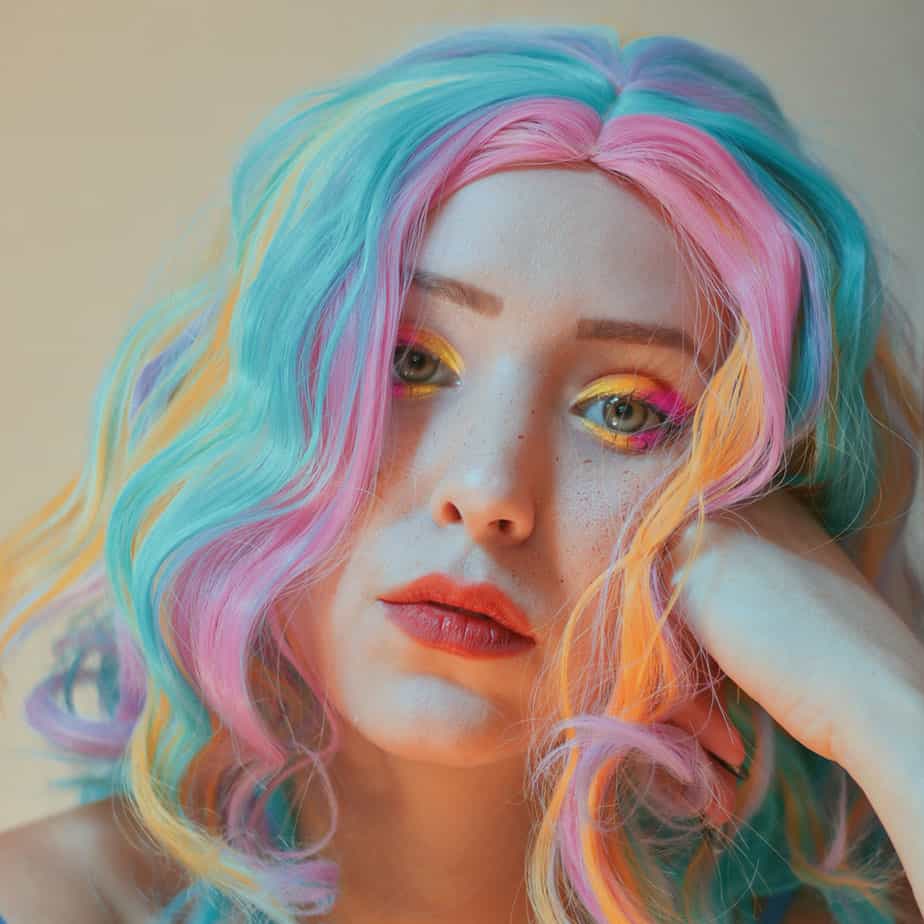If you have dyed hair, you will need to go the extra mile to keep it from fading. When summer is in full swing and you’ve already spent a lot of time soaking up the sun at the beach or just relaxing poolside with your friends, you have already put your colored hair at risk of fading and dehydration.
When you just want to spend your summer days relaxing, unfortunately it is very easy to lose track of time and cause damage to your hair due to the sun’s UV rays and the harsh chemicals found in pools. The same is true of saltwater, which can dry out your hair and cause it to become brittle and weak.
Thankfully, there are many ways you can protect your colored hair, and one such way is to wear a swim cap. Swim caps will limit your hair’s exposure to water, and ensure that the sun’s UV rays are blocked from your hair. You should also use color-depositing shampoo, as well as leave-in conditioner to keep your hair moisturized.
In this article, we will go over how a swim cap can protect colored hair. We’ll go over how you can select the right swim cap for you, as well as other ways to keep your dyed hair safe from the damaging effects of chlorinated water and salt water.
How does a swim cap protect your hair?
Swim caps are, indisputably, an essential part of any swimmer’s kit. That said, its primary purpose is to make a swimmer more hydrodynamic by covering up their hair, reducing drag. If you are not a competitive swimmer, it may not seem as beneficial, however we argue that it is.
If you care about protecting your hair from damage, a swim cap also fulfills that purpose wonderfully. It can:
- Keep your hair packed down so that it does not get caught on anything which could pull on it.
- Limit how much your hair is exposed to chlorine, pool bacteria, and saltwater.
- Prevent water from stripping your hair of its natural oils.
- Protect your hair from harsh UV rays if you are swimming outdoors.
As you can see, even if you are not a competitive swimmer, you still have much to gain from wearing a swim cap, particularly if you have dyed hair.
If you are interested in wearing a swim cap but aren’t sure how to select the right one to protect your colored hair, we will go over the criteria you should consider.
Types of swim caps for dyed hair

Silicone
Most swim caps are going to be made of silicone. It’s popular because of how durable and stretchy it is. You could stretch it wide open hundreds of times for the many swimming sessions you will have and it won’t lose its elasticity.
Silicone is also touted to not snag or pull on hair which can make it very uncomfortable to wear a swim cap. That said, I’ve certainly had my hair get pulled before even with silicone. Rather than blaming any of these materials, it’s better to moisturize your hair with water or natural oils to prevent snagging.
Latex
Next on our list is the second most popular swim cap material, Latex. If you are not a fan of how silicone fits, then you may find that Latex provides a more comfortable feel and a snug fit.
Be careful not to stretch it too far, as it is less durable than the other materials, albeit thinner and lighter so it is advantageous to wear if you are prone to overheating on a hot summer day.
Another selling point is how cheap Latex swim caps are relative to other materials, making them the ideal option for swimmers on a budget, or those who don’t want to invest too much if they know they won’t be swimming that often.
Rubber
The original swim caps were made with rubber, but they stopped using it in favor of silicone and Latex. It is making a triumphant return in recent years, and it is somewhere between silicone and Latex – slightly more durable than Latex, but not nearly as pliable.
Some popular rubber swim caps are bubble caps, which is great for swimming in chillier weather. Many rubber swim caps come with a chin strap for those who struggle to keep the swim cap from slipping off.
Lycra/Spandex
Lycra swim caps are arguably the most comfortable swim cap type to wear. The material is relatively durable and designed for longevity.
That said, it requires some maintenance on your part: rinse it with a chlorine-neutralizing solution, or else the cap can lose elasticity over time.
A drawback of Lycra is that they are porous, meaning they allow more water to flow through the cap. That said, swim caps are not designed to keep hair dry in the first place, but more exposure to chlorine can still cause your dyed hair to fade, so be wary of that.
Since Lycra does not streamline the head as well as other materials, it’s not a good option for competitive swimmers that want to improve their hydrodynamics as much as possible. For casual swimmers, it’s perfectly fine.
Neoprene
This is the same material that wetsuits are made of, and just like wetsuits, a neoprene swim cap is designed to keep you warm. They are the perfect option for swimming in chillier water, so it’s probably not something the average person is going to wear.
Neoprene swim caps are the preferred choice for triathletes and endurance swimmers that will be exposed to outdoor conditions and need to retain their body heat.
Parting words
These are the essentials you need to know to help you find a quality swim cap that can protect dyed hair from the damage that the sun and pool/salt water can cause.
Out of the materials listed, there isn’t a “wrong” answer per se, but each type of swim cap provides a different feel. You may have to try out different types of caps to find the one you like the most. If you are unsure, you can’t go wrong with silicone.
Keep in mind that not a single one of these caps is going to keep your hair completely dry; that’s not the purpose of a swim cap. Yet, swim caps can still protect dyed hair.
By packing your hair down and covering most of it up, swim caps drastically reduce your hair’s exposure to salt or chlorinated water, as well as the sun. Thus, swim caps are useful whether you are swimming indoors or outdoors.
To further ensure your hair is protected, make sure you rinse your hair with fresh water, and moisturize it with conditioner both before you enter the pool and after you’re done swimming. Moisturizing hair can make it easier to put on the cap and saturates the hair, making it so that the pool water very little pool water will be absorbed into your hair.
Applying conditioner or natural oils also replenishes the oil on your hair, creating a protective layer that will protect dyed hair from drying out and fading. When exposed to water, particularly chlorinated water, the oils will be stripped off and this would leave your sensitive hair exposed.
You can also use a 2-in-1 color-depositing shampoo and conditioner. This special shampoo can come in various colors, and you should find the color that matches your hair (e.g. purple shampoo for purple hair). This helps your hair retain its color while also cleaning it and moisturizing it.
Follow these tips in conjunction with wearing a swim cap, and you can keep your dyed hair protected even while swimming frequently.


